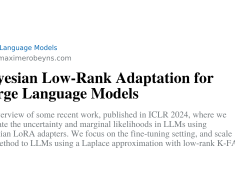
Here are the top 10 Python libraries to make your NLP projects easier
Natural Language Processing (NLP) has become an integral part of various applications, from chatbots and sentiment analysis to language translation and information extraction. Python, with its rich ecosystem of libraries, is a powerhouse for NLP projects. In this article, we explore 10 Python libraries that can significantly ease the development and implementation of NLP projects. These Python libraries for NLP projects make text analysis and language understanding more accessible and efficient.
1. NLTK (Natural Language Toolkit):
Key Features: NLTK is a comprehensive library for NLP that provides tools for tasks like tokenization, stemming, tagging, parsing, and more. It also includes corpora and lexical resources for training and testing NLP models.
2. spaCy:
Key Features: spaCy is a robust NLP library that excels in speed and efficiency. It offers pre-trained models for tasks such as named entity recognition (NER), part-of-speech tagging, and dependency parsing. spaCy’s straightforward API design facilitates rapid development.
3. TextBlob:
Key Features: TextBlob is a user-friendly NLP library built on top of NLTK. It simplifies complex NLP tasks such as sentiment analysis, part-of-speech tagging, noun phrase extraction, and more. TextBlob’s ease of use makes it an excellent choice for beginners.
4. Gensim:
Key Features: Gensim is a library primarily focused on topic modeling and document similarity analysis. It provides implementations of algorithms like Latent Semantic Analysis (LSA) and Latent Dirichlet Allocation (LDA) for uncovering hidden topics in a corpus.
5. Transformers (by Hugging Face):
Key Features: The Transformers library by Hugging Face is a go-to choice for working with state-of-the-art pre-trained language models like BERT, GPT, and T5. It simplifies the integration of powerful models into NLP pipelines for tasks such as text classification, summarization, and question-answering.
6. Pattern:
Key Features: Pattern is a versatile NLP library that offers modules for various tasks, including web mining, machine learning, and NLP. It provides functionality for part-of-speech tagging, sentiment analysis, and parsing, making it a versatile tool for text processing.
7. StanfordNLP:
Key Features: StanfordNLP is a suite of NLP tools developed by the Stanford NLP group. It supports multiple languages and includes pre-trained models for tasks like tokenization, part-of-speech tagging, and named entity recognition. Its accuracy and language coverage make it a reliable choice.
8. Polyglot:
Key Features: Polyglot is an NLP library that supports a wide range of languages. It provides tools for tasks such as named entity recognition, sentiment analysis, and language detection. Polyglot’s multilingual support is advantageous for projects involving diverse linguistic datasets.
9. PyTorch-Transformers (formerly known as pytorch-pretrained-bert):
Key Features: PyTorch-Transformers is a library that interfaces with Hugging Face’s pre-trained transformer models and seamlessly integrates them with PyTorch. It enables users to fine-tune models for specific NLP tasks, such as text classification and language modeling.
10. Stanford CoreNLP:
Key Features: Stanford CoreNLP is a powerful library that provides a range of NLP tools for tasks like sentiment analysis, named entity recognition, and dependency parsing. It supports multiple languages and is known for its accuracy and reliability.
Considerations for Choosing NLP Libraries
When selecting an NLP library for your project, it’s essential to consider factors such as:
Task Requirements: Different libraries excel in various tasks. Choose a library that aligns with the specific NLP tasks you need to perform, whether it’s sentiment analysis, named entity recognition, or topic modeling.
Ease of Use: Consider the user-friendliness of the library, especially if you are new to NLP. Libraries like TextBlob and spaCy are known for their simplicity and ease of integration.
Language Support: If your project involves multiple languages, opt for libraries like Polyglot or StanfordNLP that offer broad language support.
Model Performance: Assess the performance of pre-trained models provided by the library, especially if your project requires high accuracy. Hugging Face’s Transformers, for example, offers state-of-the-art models for various NLP tasks.
Community Support: Check the community and documentation support for the library. Active communities often mean timely updates, bug fixes, and additional features.
Conclusion
Embarking on an NLP project becomes significantly smoother with the right set of tools. The Python libraries mentioned in this article cater to a diverse range of NLP tasks, from basic text processing to advanced language modeling. Depending on your project’s requirements, consider the strengths and features offered by each library to enhance the efficiency and effectiveness of your NLP endeavors.







